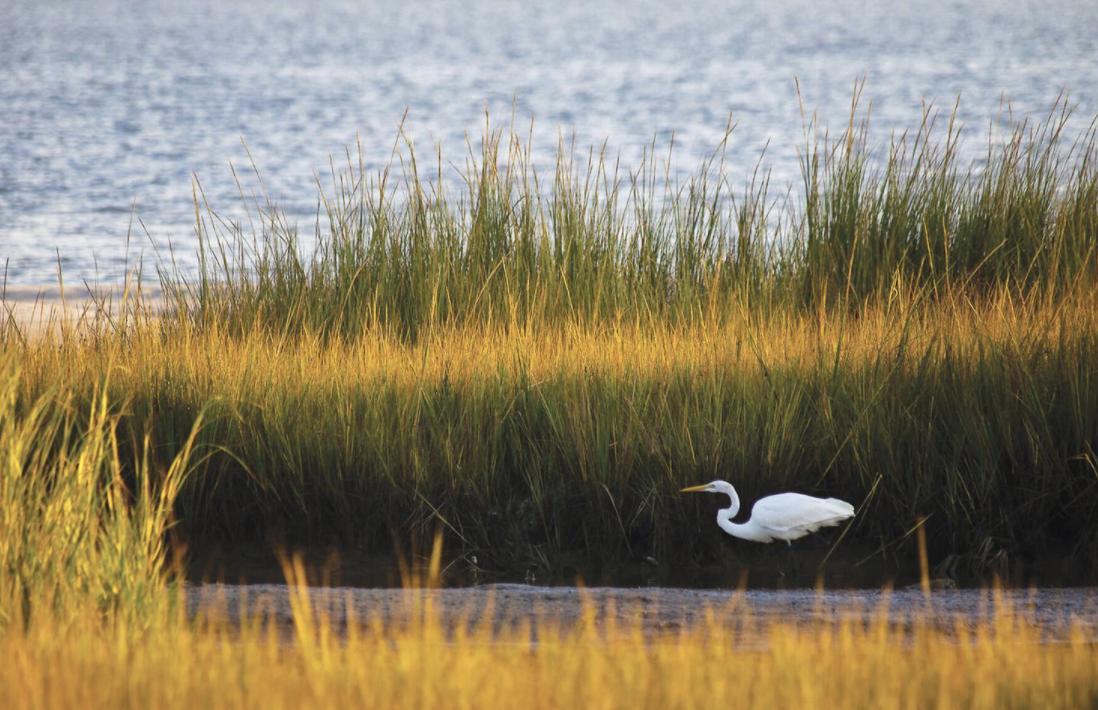The struggling Chesapeake Bay restoration effort stands to get a hefty infusion of funding from the ambitious $1.2 trillion infrastructure deal reached over the weekend in the U.S. Senate.
The Infrastructure Investment and Jobs Act calls for providing $238 million over the next five years to the U.S. Environmental Protection Agency’s Chesapeake Bay Program, which coordinates the state-federal restoration effort.
The Bay restoration effort is among $21 billion in environmental remediation projects that would be funded under the bill. The 2,702-page measure also includes money for physical infrastructure, such as highways, bridges, transit and rail, airports and ports, power and water systems, waterways, broadband access and electric vehicle charging stations.
Hammered out by a bipartisan group of senators, the infrastructure bill is much smaller than the $2.6 trillion plan that Biden proposed in March. Many Republicans had criticized that plan because it included funding for things not traditionally deemed as infrastructure, such as workforce training and care for the elderly and disabled.
Those are now to be included in a separate $3.5 trillion spending bill that Democrats are working on, which faces an uncertain future in the closely divided Congress.
The bipartisan infrastructure bill, which is expected to pass the Senate with the backing of Republican leaders, also slashed funding for clean energy tax credits intended to help fight climate change.
But the bill increases spending overall on environmental remediation above what Biden had proposed. It would provide funds for cleaning up abandoned mine land and Superfund sites, as well as for improving the resiliency of degraded ecosystems, such as the Great Lakes, Puget Sound and Gulf of Mexico.
The Chesapeake restoration effort also could get additional help from the bill’s proposal to boost funding nationally for water and wastewater infrastructure. Two EPA programs that provide loans to states for upgrading sewage and stormwater treatment facilities and for enhancing drinking water systems each would get an additional $14.7 billion over the next five years. That would more than double the current annual level of funding for such projects.
The Chesapeake Bay Program received $87.5 million for fiscal year 2021, and President Biden has proposed increasing that by $3 million for fiscal year 2022, which starts Oct. 1. The House has already approved that level of funding. The infrastructure measure, if passed, would boost that by roughly 50%, providing an additional $47.6 million a year.
“As we work to modernize our infrastructure and tackle climate change, it’s crucial that we’re investing in protecting our watersheds,” said Sen. Chris Van Hollen (D-MD), a member of the Senate Appropriations Committee. “That’s why we fought to include funding for the Chesapeake Bay Program in the bipartisan infrastructure deal.”
Sen. Ben Cardin (D-MD) cited the Bay Program funding as one of the reasons he supported the infrastructure bill. “Marylanders will be pleased to see this includes funds for ecosystem restoration,” he said in a statement.
The bill’s text doesn’t say how the EPA is to use the additional money. The Bay Program typically funds research and helps assess cleanup progress, but nearly two-thirds of its money also goes to states, local governments and nonprofit groups for on-the-ground projects.
Even without such details spelled out in the bill, Bay advocates hailed the proposed funding increase. Kristin Reilly, director of the Choose Clean Water Coalition, called it “a shot in the arm” for the states and federal government, which could help them get closer to putting all needed pollution reduction practices in place by their 2025 deadline.
“While currently there is ambiguity on the exact allocation of this funding, we are heartened to see the restoration of our waterways is recognized as a national priority,” Reilly said in a statement. “This investment will not only help provide all the benefits clean water brings, but the many on-the-ground restoration projects this funding supports will also deliver good jobs and stimulate local economies.”
With just four years to go to meet the deadline of the “pollution diet” that the EPA set for the Bay in 2010, advocates and state and local officials have been urging Congress to boost funding for the restoration effort, which remains far short of many of its goals.
At least one-third of the outcomes pledged in the 2014 Chesapeake Bay Watershed Agreement are lagging badly or in limbo. An internal Bay Program review found that seven, including the key goal of meeting nutrient and sediment pollution reduction targets, are unlikely to be met by the 2025 deadline.
In May, governors of the six Bay watershed states, the mayor of the District of Columbia and the chair of the Chesapeake Bay Commission, a tri-state legislative advisory body, wrote Congress seeking an additional billion dollars for the effort. They didn’t specify how the extra money could be spent.
The Choose Clean Water Coalition, representing dozens of environmental and community groups across the six-state watershed, also wrote congressional leaders that month asking in part for a $132 million boost in Bay Program funding. It proposed distributing the increased funding in grants to states and local governments to support their restoration efforts.
By Timothy B. Wheeler

